Mark Sisson's Blog, page 185
April 23, 2017
Weekend Link Love – Edition 449
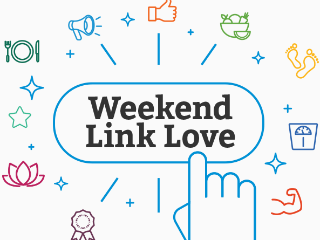 RESEARCH OF THE WEEK
RESEARCH OF THE WEEKSleeping pills linked to death, even after controlling for pre-existing poor health.
Meanwhile, despite all the warnings to the contrary, supplements are not.
Intense exercise inhibits muscle aging.
Psychedelics really do open up your mind.
Men who strength trained on a ketogenic diet saw increased testosterone compared to those who trained on a standard diet.
“Both men and women influence men [to exercise], while only women influence other women.”
The appendix: not so vestigial, after all.
NEW PRIMAL BLUEPRINT PODCASTS
 Episode 165: Justin Strenstrom: Host Elle Russ chats with Justin Stenstrom, a life coach, best-selling author, speaker, and founder of the Elite Man Conference.
Episode 165: Justin Strenstrom: Host Elle Russ chats with Justin Stenstrom, a life coach, best-selling author, speaker, and founder of the Elite Man Conference.
Each week, select Mark’s Daily Apple blog posts are prepared as Primal Blueprint Podcasts. Need to catch up on reading, but don’t have the time? Prefer to listen to articles while on the go? Check out the new blog post podcasts below, and subscribe to the Primal Blueprint Podcast here so you never miss an episode.
7 Primal Mantras to Drive Your Success
“What’s That?” Ear Health: Dietary and Lifestyle Choices That Preserve It
INTERESTING BLOG POSTS
Athletic options for kids uninterested in traditional team sports.
Amsterdam has a simple and effective strategy for fighting obesity: eliminating fruit juice and promoting more sleep.
How meal planning can help you lose weight.
MEDIA, SCHMEDIA
Researchers are scouring old medieval texts for clues to new antibiotics.
An Italian court rules that cell phone use caused a brain tumor.
EVERYTHING ELSE
This is another reason to let your kids out to play.
Study data found in basement challenges old claims about dietary fat. A key quote: “Instead, he said, his discovery and analysis of long-lost data underline how the failure to publish the results of clinical trials can undermine truth.”
This is how you age, folks.
AI better than human doctors at gauging heart attack risk.
Techies mess up on food yet again.
Though I still love Thailand, there goes one big reason to visit.
THINGS I’M UP TO AND INTERESTED IN
Editorial I enjoyed: Living longer isn’t the only reason to ride your bike.
How I know the kids are all right: A six-year-old with a science podcast.
Blog post I’m pondering: What Elon Musk’s up to.
Short info bite I liked: Good experiences can block epigenetic trauma.
New Zealand news that didn’t surprise me: A registered dietitian opens up an inquiry into the circumstances of Dr. Schofield’s recent appointment as the new Chief Education Health and Nutrition Advisor, citing his interest into “areas of nutritional controversy.” Here we go.
RECIPE CORNER
Use just one skillet to make crispy-skinned salmon with curried leeks.
Because I’m worried about Thai street food, pad thai chicken wings.
TIME CAPSULE
One year ago (Apr 23– Apr 29)
10 Common Primal Mistakes You Might Be Making – No one’s perfect.
Why Weight Loss Doesn’t Promise Happiness – It can help, but it isn’t everything.
COMMENT OF THE WEEK
“All I have to say Sisson is your wife must be really good looking.
Jokes aside, Devyn seems like an amazing individual, mature and wise beyond her years and the book looks awesome.”
– Ha! She is, HealthyHombre, and she is, and it is.

The post Weekend Link Love – Edition 449 appeared first on Mark's Daily Apple.



April 22, 2017
Seaweed Soup
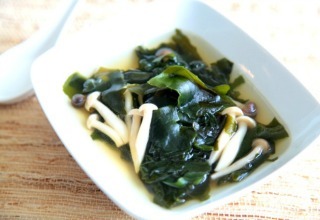 Koreans serve seaweed soup to women right after they give birth, believing it to be a restorative soup that’s high in nutrients for new mothers. However, it’s not just new mothers who can benefit from this rich source of calcium, iodine and other minerals. A bowl of seaweed soup is good for anyone, any time.
Koreans serve seaweed soup to women right after they give birth, believing it to be a restorative soup that’s high in nutrients for new mothers. However, it’s not just new mothers who can benefit from this rich source of calcium, iodine and other minerals. A bowl of seaweed soup is good for anyone, any time.
Korean seaweed soup is a very simple soup. It’s made from wakame seaweed simmered in water with mushrooms, sesame oil, garlic and tamari. These ingredients come together into a comforting broth swirling with umami flavor.
For a more robust soup, substitute thinly sliced beef for the mushrooms. This soup doesn’t need meat, though, to be satisfying. It’s the perfect meal when you’re craving something that’s rich with sea-sourced nutrients, but light and easy to digest.
Servings: 4
Time in the Kitchen: 35 minutes
Ingredients
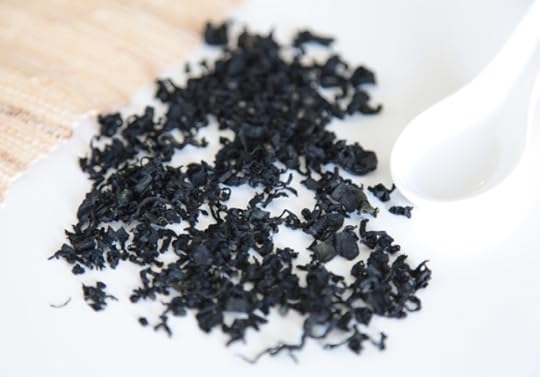
1 ounce dried wakame (28 g)
4 to 6 ounces mushrooms. sliced (shiitake, maitake, nameko) (113 g to 170 g)
1 tablespoon sesame oil (15 ml)
2 garlic cloves, finely chopped
2 tablespoons tamari, soy sauce or coconut aminos (30 ml)
6 cups water (1.4 L)
Instructions

Soak wakame in cold water for 10 minutes to rehydrate. Drain. Snip into smaller pieces with scissors.
Heat sesame oil in a pot and saute mushrooms 2 to 5 minutes.
Add garlic and soy sauce. Saute one more minute.
Add water and wakame. Bring to a boil. Lower heat and simmer 20 minutes. Add salt or more tamari to taste.


The post Seaweed Soup appeared first on Mark's Daily Apple.



April 21, 2017
Finally Getting Lean and Feeling Excellent!
It’s Friday, everyone! And that means another Primal Blueprint Real Life Story from a Mark’s Daily Apple reader. If you have your own success story and would like to share it with me and the Mark’s Daily Apple community please contact me here. In fact, I have a contest going right now. So if you have a story to share, no matter how big or how small, you’ll be in the running to win a big prize. Read more here.
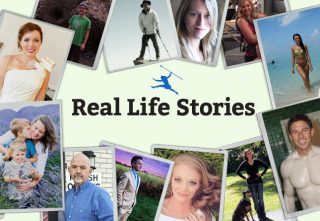 Big-boned. That’s what I told myself I was when I was growing up. I put down to genetics a tendency to gain fat with unnerving ease but what else could I blame? Armed with the conventional wisdom of Australia in the 1980s and 90s, we were simply fed the way we were taught to eat: some meat and vegetables but otherwise plenty of white bread, cereals, skimmed milk, margarine, and other ‘healthy carbs’ like potatoes and pasta. Having something of a sweet tooth myself, I was no stranger to unloading a tablespoon of sugar into my bowl of Weetbix or Rice Bubbles. I didn’t like water (admittedly, the tap water in Adelaide is still the worst I’ve tasted to this day) so anytime I drank fluids, they were enhanced with the sugary goodness of cordial. I often got sick when I was young, generally in the form of lingering colds, but my stomach often played up, too; nausea was a given for me for long periods of time, and if there was a stomach bug going around, I’d be the first to get it. (It would later turn out via a blood test in my 20s that I was borderline coeliac so I’d be surprised if that isn’t connected!). I was a reasonably active child, spending a lot of time on my BMX at the bike track, out waterskiing on the river, swimming in our pool, rowing, and playing weekly games of hockey, so I’m lucky not to have been really seriously out of shape. I was most definitely very soft around the edges though.
Big-boned. That’s what I told myself I was when I was growing up. I put down to genetics a tendency to gain fat with unnerving ease but what else could I blame? Armed with the conventional wisdom of Australia in the 1980s and 90s, we were simply fed the way we were taught to eat: some meat and vegetables but otherwise plenty of white bread, cereals, skimmed milk, margarine, and other ‘healthy carbs’ like potatoes and pasta. Having something of a sweet tooth myself, I was no stranger to unloading a tablespoon of sugar into my bowl of Weetbix or Rice Bubbles. I didn’t like water (admittedly, the tap water in Adelaide is still the worst I’ve tasted to this day) so anytime I drank fluids, they were enhanced with the sugary goodness of cordial. I often got sick when I was young, generally in the form of lingering colds, but my stomach often played up, too; nausea was a given for me for long periods of time, and if there was a stomach bug going around, I’d be the first to get it. (It would later turn out via a blood test in my 20s that I was borderline coeliac so I’d be surprised if that isn’t connected!). I was a reasonably active child, spending a lot of time on my BMX at the bike track, out waterskiing on the river, swimming in our pool, rowing, and playing weekly games of hockey, so I’m lucky not to have been really seriously out of shape. I was most definitely very soft around the edges though.
It was around the time I left school in 2000 at the age of 18 that friends and I started to take an interest in lifting weights, but we really had no idea what we were doing at that stage, especially as far as nutrition was concerned. We were far more likely to be downing post-training beers than anything remotely helpful like a protein shake or, god forbid, actual food. For the next couple of years I left the weights, and my only exercise was the daily 30-minute ride to and from my job at an award-winning bakery. I can only thank having youth on my side for the fact that the unfathomable number of pies, sausage rolls, cakes, buns and Red Bulls I consumed didn’t go straight to my fat stores and stay there!
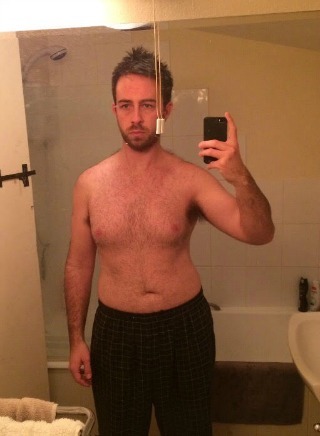 The next decade or so contained a variety of approaches to training, nutrition and wellbeing, some more successful or long-lasting than others. I discovered my love of a style of kung fu which I’ve now kept up for 13 years; I dabbled in Ori Hoffmeckler’s Warrior Diet for a few months; I fell in love with kettlebell training and have grown a pretty nice collection of them which I use religiously; I fell out of love with a vegetarian-pasta-obsessed girlfriend (this stuff contained pasta, tinned tomatoes, a couple of carrots and some celery – talk about a malnourished period of my life!); whey protein took its place in my diet and, like an epiphany, crystallized for me the importance protein plays in the healthy functioning of the body; I completed a personal training qualification but ended up not working as a PT after learning the statistic about the very high number of PTs who contract vocal nodules – I was (and still am) a classical singer who relied on his vocal health!
The next decade or so contained a variety of approaches to training, nutrition and wellbeing, some more successful or long-lasting than others. I discovered my love of a style of kung fu which I’ve now kept up for 13 years; I dabbled in Ori Hoffmeckler’s Warrior Diet for a few months; I fell in love with kettlebell training and have grown a pretty nice collection of them which I use religiously; I fell out of love with a vegetarian-pasta-obsessed girlfriend (this stuff contained pasta, tinned tomatoes, a couple of carrots and some celery – talk about a malnourished period of my life!); whey protein took its place in my diet and, like an epiphany, crystallized for me the importance protein plays in the healthy functioning of the body; I completed a personal training qualification but ended up not working as a PT after learning the statistic about the very high number of PTs who contract vocal nodules – I was (and still am) a classical singer who relied on his vocal health!
I’d always admired Arnold Schwarzenegger (his dedication and his physique, anyway) so at the time I was doing the PT course, I started training with traditional weights again to get as big and strong as I possibly could. And I did. I got very big and very strong. And fat. I got so fat you could barely tell I’d gained a notable amount of muscle too. Conventional Lifting Wisdom, as I was interpreting it, had been telling me to eat as much as I could fit in my belly, multiple times a day. I was loading up on fantastic meat (my sister managed one of the best butcher shops in Australia), but I was also gorging on peanut butter right out of the jar just to keep my calories up. I really ran with the concept and completely overshot the mark, going from 77kgs to 94kgs (169lbs to 207lbs) at a height of just shy of 6ft in a matter of months, and I did not look or feel healthy or especially happy by this point. It was a real eye-opener in terms of my caloric requirements, too – I’d significantly overestimated how much energy I was burning and how much of which foods I needed to eat for recovery. I have no regrets because self-experimentation has taught me a lot, but I realise in hindsight that this phase may well have created the insulin resistance that stayed with me for quite a few of the ensuing years.
Six months later. New wonderful girlfriend (soon-to-be-wonderful-wife), moved to a smaller place that didn’t fit my weights gear (power cage, Olympic bar and the rest) which was a real problem for my lifting as the introvert in me makes me very much a solo trainee – I’m completely self-conscious in a gym, and I need silence to train effectively – so I got lazy and happy. I was still using my kettlebells every so often and training kung fu but not with the dedication I had been. I lost some fat, but I also lost some muscle so for the next couple of years I was strong but kind of out of shape again with my training in flux without a clear goal. In 2011 we moved our whole lives over to the UK to try our hands at fully freelance classical music careers (my wife is a violinist). Things began well but building a freelance career where you don’t know anyone inevitably means pinching pennies so our eating suffered somewhat. It was never hideous but it was definitely still conventional in the sense that we didn’t really think much about what we ate. Lots of carbs but lots of fat to go with it, plus healthy volumes of heavy British ales. I kept up the kung fu and I bought some cheap kettle bells, but my commitment was somewhat intermittent given our entire living space was one room for two years. Still didn’t look great at somewhere between 87kg and 91kg (190-200lbs). For most of this time though, because we were poor, we walked a hell of a lot to avoid paying for transport!
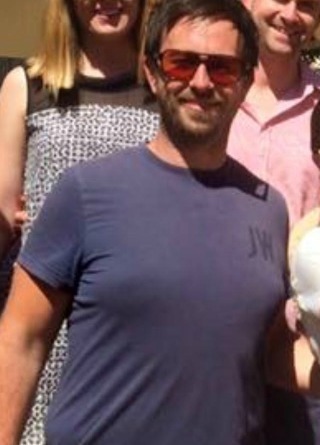 Still in the UK and careers going from strength to strength, we had our first beautiful boy, Tobias, in 2015 and despite ramping up my training and healthier eating in the months beforehand, I REALLY let myself go once he appeared in our lives. I was sleep-deprived so I constantly fell for comfort foods and beer and wine, and within nine months I was up to 95kg (209lbs). I’d never been heavier or felt worse. They say it takes 28 days to build a habit and three days to break one and during this period, any time I tried to train, I couldn’t create enough momentum to take me to the next session; I couldn’t get anywhere near enough to the ‘28 days’ to establish the pattern I needed to be consistent again. Of course, I was weaker and more unfit than I had been and I found this very depressing so I coped by avoiding it altogether – and I’d always hated avoidance as a coping tactic. I was becoming someone whose choices I couldn’t respect and that was heartbreaking to me. I’d always been confident but that was now diminishing to the point that friends and colleagues commented on it. I even started to get ever-increasing bouts of performance anxiety on stage – scary stuff because I’d seen it end careers. The final straw was a photo that was taken of a group of friends and me on a visit back home to Australia; despite knowing inside that I’d gained a lot of fat, it was seeing my body stretching my t-shirt in all directions and having the photo shared far and wide that was my ‘ugh’ moment.
Still in the UK and careers going from strength to strength, we had our first beautiful boy, Tobias, in 2015 and despite ramping up my training and healthier eating in the months beforehand, I REALLY let myself go once he appeared in our lives. I was sleep-deprived so I constantly fell for comfort foods and beer and wine, and within nine months I was up to 95kg (209lbs). I’d never been heavier or felt worse. They say it takes 28 days to build a habit and three days to break one and during this period, any time I tried to train, I couldn’t create enough momentum to take me to the next session; I couldn’t get anywhere near enough to the ‘28 days’ to establish the pattern I needed to be consistent again. Of course, I was weaker and more unfit than I had been and I found this very depressing so I coped by avoiding it altogether – and I’d always hated avoidance as a coping tactic. I was becoming someone whose choices I couldn’t respect and that was heartbreaking to me. I’d always been confident but that was now diminishing to the point that friends and colleagues commented on it. I even started to get ever-increasing bouts of performance anxiety on stage – scary stuff because I’d seen it end careers. The final straw was a photo that was taken of a group of friends and me on a visit back home to Australia; despite knowing inside that I’d gained a lot of fat, it was seeing my body stretching my t-shirt in all directions and having the photo shared far and wide that was my ‘ugh’ moment.
Enter Primal. I stumbled on Mark’s Daily Apple after looking at hunter-gatherer-related pages (I’d always had a thirst for knowledge about prehistoric peoples) and, like so many others who write these stories, I was instantly dumbstruck by the sense in everything I read. I’d heard bits and pieces about Paleo and a lower carb lifestyle (I tried the Ketogenic Diet in early 2014 with mixed success) but not like this. I ordered The Primal Blueprint days later and finally I saw what I needed presented in a way that used science, logic and common sense without the sensationalism you see surrounding other ‘diets’. This was so much more than a simple diet; as I saw it, it took care of everything that makes the human body and mind thrive, and with countless studies to back it up.
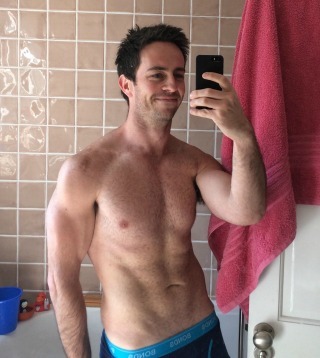 I wasn’t a super high-carb eater so I didn’t suffer terribly from the ‘carb flu’ the way some do when I dropped the last vestiges of a grainy diet (oats and sandwiches and the like) and upped the fat from sources like avocado, eggs, nuts, bacon, fish, heavy cream in coffee, and more olive oil, but still, the weight just flew off – in a matter of a few weeks I was down 6kg. I’m sure some of that was water but I felt so much better too: I was already getting sick far less often, I was sleeping better, my energy was balanced and I wasn’t getting as hungry. I attempted my first 24 hour fast on a major concert day (much to the bewilderment of my colleagues) and I barely noticed on stage that I hadn’t eaten all day. One of the other great benefits of all this for me has been the ease with which I can retain muscle while eating little enough to lose the fat off the top. 13 months on, I’m down 15.5kg (34lbs) and I can see my abs for the first time in my ENTIRE LIFE – and I still have most of the muscle I worked so hard for.
I wasn’t a super high-carb eater so I didn’t suffer terribly from the ‘carb flu’ the way some do when I dropped the last vestiges of a grainy diet (oats and sandwiches and the like) and upped the fat from sources like avocado, eggs, nuts, bacon, fish, heavy cream in coffee, and more olive oil, but still, the weight just flew off – in a matter of a few weeks I was down 6kg. I’m sure some of that was water but I felt so much better too: I was already getting sick far less often, I was sleeping better, my energy was balanced and I wasn’t getting as hungry. I attempted my first 24 hour fast on a major concert day (much to the bewilderment of my colleagues) and I barely noticed on stage that I hadn’t eaten all day. One of the other great benefits of all this for me has been the ease with which I can retain muscle while eating little enough to lose the fat off the top. 13 months on, I’m down 15.5kg (34lbs) and I can see my abs for the first time in my ENTIRE LIFE – and I still have most of the muscle I worked so hard for.
 Day-to-day, I tend to cycle through the regular components of my diet according to what I’m in the mood for. Every morning I have the juice of half a lemon in hot water before anything else. If I’m having breakfast (I often fast till lunch), I’ll either have a protein shake or some full-fat natural Greek yoghurt and some ricotta with berries, a couple of Brazil nuts and milled flax, pumpkin and sunflower seeds, plus a double espresso with a splash of heavy cream. Lunch is generally a big tin of salmon (bones included, though I take the skin out – I’ve been squeamish about fish skin since I worked in a seafood factory at the age of 19) mixed with a bit of yoghurt, capers, cucumber, lemon juice, olive oil, apple cider vinegar, and seaweed salt. Dinners are a mix! It’s always meat and vegetables in some combination (curry, tagine, roast, summer salad, etc), generally without much in the way of carbs. Lamb shanks are my all-time favourite meal, however they’re prepared, and I’ll have some potato with them. I’ll have a spoon or two of rice with a curry.
Day-to-day, I tend to cycle through the regular components of my diet according to what I’m in the mood for. Every morning I have the juice of half a lemon in hot water before anything else. If I’m having breakfast (I often fast till lunch), I’ll either have a protein shake or some full-fat natural Greek yoghurt and some ricotta with berries, a couple of Brazil nuts and milled flax, pumpkin and sunflower seeds, plus a double espresso with a splash of heavy cream. Lunch is generally a big tin of salmon (bones included, though I take the skin out – I’ve been squeamish about fish skin since I worked in a seafood factory at the age of 19) mixed with a bit of yoghurt, capers, cucumber, lemon juice, olive oil, apple cider vinegar, and seaweed salt. Dinners are a mix! It’s always meat and vegetables in some combination (curry, tagine, roast, summer salad, etc), generally without much in the way of carbs. Lamb shanks are my all-time favourite meal, however they’re prepared, and I’ll have some potato with them. I’ll have a spoon or two of rice with a curry.
Post-training I’ll always have a protein shake with creatine and a spoonful of blackstrap molasses or an occasional banana. I was eating a lot of eggs but I’ve largely dropped them of late due to some bloating – which I hope passes as they’re so convenient and tasty! I could certainly improve on my base level Primal diet, though. I really need to eat more vegetables throughout the day, and I need to eat more collagen due to my taste for muscle meat. That said, every day I feel I learn more about how I can best make it work for me so food decisions become easier and more instinctive.
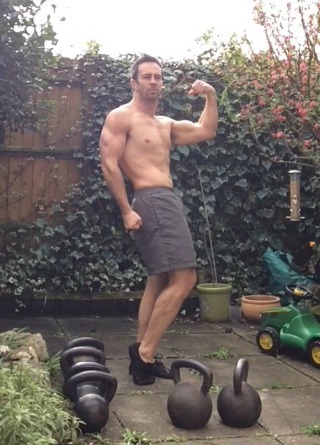 My training schedule varies according to how I feel, but my average week will contain four or five days with some form of training. These will either be heavy kettlebell work (overhead mostly – clean and presses, snatches, and some rows and swings), or weighted dips, chin-ups, pistols and Turkish Get-ups, or a 15-minute farmers’ walk with my heaviest ‘bells, kung fu training, or (lately) some sprints. None of these sessions will exceed an hour – I’m generally done between 30 and 45 minutes. I’ll also knock out a set of pushups or chin-ups or dips when I’m near my doorway chin-up bar or a pair of kitchen chairs!
My training schedule varies according to how I feel, but my average week will contain four or five days with some form of training. These will either be heavy kettlebell work (overhead mostly – clean and presses, snatches, and some rows and swings), or weighted dips, chin-ups, pistols and Turkish Get-ups, or a 15-minute farmers’ walk with my heaviest ‘bells, kung fu training, or (lately) some sprints. None of these sessions will exceed an hour – I’m generally done between 30 and 45 minutes. I’ll also knock out a set of pushups or chin-ups or dips when I’m near my doorway chin-up bar or a pair of kitchen chairs!
I travel a lot for work, often for a couple of weeks at a time staying in various hotels touring around the USA. Lots of the tour days will contain two flights (when I’m already jetlagged and having to be out of bed by 5 a.m. after a late concert the night before), and this can add a little guesswork into the equation as far as not knowing what type of meal an airport will have or a promoter will provide – I’ll sometimes simply have to be a little less strict. Same thing with frequent 24-hour trips to spots all over Europe like that great Mecca of beer, Belgium. I’m extremely lucky to have a career that takes me to these wonderful places – as a great food and drink lover, I feel I owe it to myself to make the most of what these cultures have to offer so I might indulge a little. In any case, as long as I get back in the saddle on my return, nothing negative lasts very long at all. The 80/20 principle works very well for me – I’ve proven to myself that loosening the reins every so often doesn’t have to end the game for me, at least once my body and I knew the ropes. I’ve learned that I can get away with a couple of beers here, some wine and chocolate there, or an almond croissant on a special morning out with my wife and son. I don’t always feel great afterwards but it’s good for the soul.
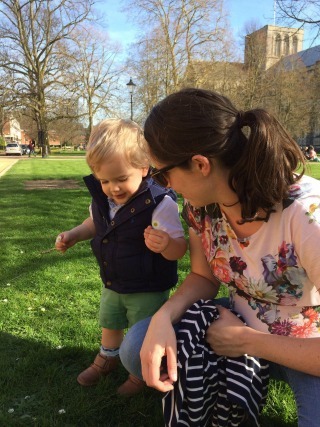 If there’s hope I have to offer to anyone in particular who is contemplating taking the plunge, it’s to new parents. Our respective families live on the other side of the world, so we’re essentially raising our son alone – life is therefore far from easy, and a day’s planned physical activity can often go out the window at a moment’s notice – but the Primal approach is so adaptable that it needn’t ever be derailed. If Tobias woke early from his nap, my kettlebell session would be halved; if I was completely destroyed by a night with him refusing to sleep for more than 30 minutes at a time, I did a handful of chin-ups and chair dips and called it a day on training till I’d caught up a bit; if I was stressed by his unwillingness to play on his own for an entire day and felt like falling into a packet of sweet biscuits or chips, I was thankfully armed with the knowledge that I was just going to feel awful afterwards. And if I did succumb? I’d appreciate the moment for what it was and move on because I’d be back to craving what my body now instinctively knew what was good for it. This is all still relevant, but now that Tobias is nearly two, the challenge has changed a bit. Now he insists on lifting kettlebells with me (well, he deadlifts the 8kg one at least!), he gets me to help him with dips, he planks with me, he copies one-arm push-ups, and he now enjoys using a foam roller to work out all that tension created by the incredibly demanding situation of being a 23-month-old with his every whim taken care of.
If there’s hope I have to offer to anyone in particular who is contemplating taking the plunge, it’s to new parents. Our respective families live on the other side of the world, so we’re essentially raising our son alone – life is therefore far from easy, and a day’s planned physical activity can often go out the window at a moment’s notice – but the Primal approach is so adaptable that it needn’t ever be derailed. If Tobias woke early from his nap, my kettlebell session would be halved; if I was completely destroyed by a night with him refusing to sleep for more than 30 minutes at a time, I did a handful of chin-ups and chair dips and called it a day on training till I’d caught up a bit; if I was stressed by his unwillingness to play on his own for an entire day and felt like falling into a packet of sweet biscuits or chips, I was thankfully armed with the knowledge that I was just going to feel awful afterwards. And if I did succumb? I’d appreciate the moment for what it was and move on because I’d be back to craving what my body now instinctively knew what was good for it. This is all still relevant, but now that Tobias is nearly two, the challenge has changed a bit. Now he insists on lifting kettlebells with me (well, he deadlifts the 8kg one at least!), he gets me to help him with dips, he planks with me, he copies one-arm push-ups, and he now enjoys using a foam roller to work out all that tension created by the incredibly demanding situation of being a 23-month-old with his every whim taken care of.
As an aside, growing up in Australia, we took the sun for granted so we never considered taking vitamin D supplements – we simply didn’t need to – but it took me five years here in the UK to realise that it’s a really good idea in winter! Two months ago I was feeling especially drained, I had a constant headache, my sleep was sporadic, I was getting sick a lot again, and my fat loss had stalled. I re-read Mark’s article about vitamin D and checked all my symptoms against a few other websites and realised that was it. I’m now taking 5,000-10,000IU a day and all of the symptoms have gone, including my fat loss plateau – and that’s the only thing I’ve changed. If you’re not getting much sun for a long period of time, it’s definitely worth checking your vitamin D levels.
So that’s my Primal journey so far! I have to commend and thank my wife, Julia. Despite some reluctance at the beginning – she was raised with a more progressive and holistic attitude towards food, and as a result hasn’t struggled with the same fat gain or health issues – she is completely onboard and has been really supportive with all this (useful because she loves cooking and does nearly all of it). I’m also very glad to be able to give our boy the healthy head start not many get at the same age. We’re expecting our second baby in a couple of months so we’ll be back to square one with the sleep issues, but I now know I don’t have to drop everything as a result!
I have so much gratitude to Mark for the wealth of reliable and verifiable information he makes available in a world which is only just starting to shift in the right direction. He’s had the most profound influence on our health and well-being that it’s hard to know where to begin. So thank you, Mark!
Tom

The post Finally Getting Lean and Feeling Excellent! appeared first on Mark's Daily Apple.



April 20, 2017
Solving Your Nature Deficit Disorder in the City: A Tree Grows…Almost Anywhere
 Today’s guest post is offered up by Katy Bowman, biomechanist and author of the bestselling Move Your DNA and her recent book, Movement Matters, which examines our sedentary culture, our personal relationship to movement, and some of the global effects of outsourcing movement. I’m happy to welcome a good friend back to Mark’s Daily Apple to share on this topic. Just in time for Earth Day this weekend…
Today’s guest post is offered up by Katy Bowman, biomechanist and author of the bestselling Move Your DNA and her recent book, Movement Matters, which examines our sedentary culture, our personal relationship to movement, and some of the global effects of outsourcing movement. I’m happy to welcome a good friend back to Mark’s Daily Apple to share on this topic. Just in time for Earth Day this weekend…
I recently held a couple of events in New York City. A question came up a few times: How can someone who lives and operates their daily life in a big city get the nature they both need and want when they’re unable or ready to change where they live? The answer can help many people in our culture achieve a deeper relationship with nature no matter where they live.
Step 1: Check your vacation.
Although the exact number and distribution of everyone’s vacation days range, if you’re someone who gets vacation time at work, take a good hard look at how you spend it. Do you spend this portion of your life—when you’re (supposedly) under the least amount of obligation—in nature camping or hiking? Start with this. Take seven or eight months to plan the wilderness experience you’ve been wanting. It doesn’t have to be expensive—see if you can borrow or rent camping gear, or share the costs of a campsite with friends. It can also be closer to home than you realize, and there are often organizations that help people connect to nature via public transportation or intercity buses.

Step 2: Check your weekends.
Any nature there? Are you hitting the trails for a day hike or taking the family to the park for a picnic? Is it difficult to get to nature because you’re already scheduled for and immersed in non-nature activities? Figure out why and adjust as possible.

Step 3: Check your time before and after work.
It may not be abundant time, but you can likely find 15-60 minutes at both the beginning and end of your day that are ripe for adjusting. Are you going outside for even 15-minute walks first and last thing? Do you ever step outside (or even look outside!) to gaze at and identify the phase of the moon? Ever get up early to revel in a sunrise, or is it too hard to get up that early? Hint: Going to bed earlier is sleeping in on the other side.

Step 4: Identify the many components of nature.
Although I’d argue that nature is everything, nature as we often think and talk of it—that wild place where we can escape and be free—can be thought of as the sum of many parts. When you say you want more nature, what draws you to it, exactly? A few aspects of nature include:
fresh air
natural light
long distances for viewing
temperature variations
plant interactions
the rhythm of seasons
the speed of the wind
precipitation
wildlife
natural movement
quiet
rest
biophony (the sound of the natural world, as opposed to anthropophony, the sound created by humans)
water
Of course, there are far more parts to nature than this. Once you can recognize them, you can select those that feel most necessary to you. Then you can identify elements of nature you can bring into your home or everyday life, to increase your overall interaction with various parts of nature.
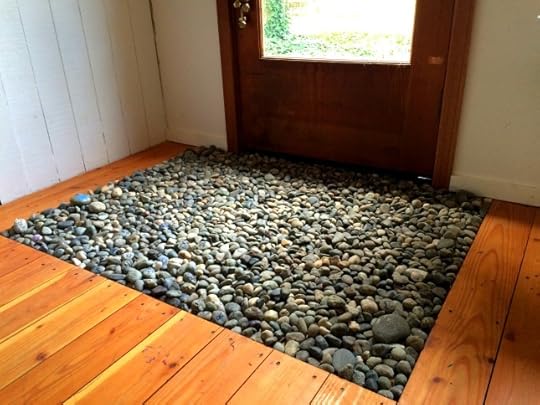
Step 5: Adjust your environment.
If you love interacting with plants in nature but don’t have any on your desk, there’s a gap you can fill immediately, no matter your zip code. If you love the beauty of nature, decorate your windowsills or shelves with rocks and shells, and your table with bouquets of leaves or branches (from your weekend hike!). If you have or work with kids—or even if you don’t—keep baskets holding rocks, fossils, moss, snake skins, antlers, and bones where curious hands can find them easily.

Practice natural movements for exercise, sit on the floor or seats of various heights to use your knees and hips differently, and add rugs with various textures to stimulate bare feet. Lower your thermostat or open the windows more often. This way, you can start interacting with the aspects of nature just outside the walls of your office or home by moving the thermal-regulating parts of your body.
Go without sunglasses more often, starting off early and late in the day, a few minutes at a time, and build up to being able to tolerate natural light. Or walk without an umbrella sometimes and experience a little discomfort (and recognize how exhilarating that can be).
Try to eat locally enough that you’re in touch with when things are growing in your region; get to know which foods are ripe when. Keep some containers of medicinal plants (aloe is an easy one), herbs, or vegetables in your house or on a balcony, or volunteer at a community garden.
Keep a pair of binoculars by your window and become an urban bird watcher. There are more than pigeons out there, and even if there aren’t, pigeons are fascinating to observe.
Put your phone down and turn off your GPS and start navigating by map and then by landmark—skills that you’ll likely call on during your wilderness vacation.
Read books and poetry about nature. What you read helps to form your worldview. What you read is where you’re putting your attention. What ideas are you spending time with?

Step 6: Keep going.
When we have strong tendencies toward all-or-nothing thinking, we forget the value of small transitioning movements. Before you start a marathon, you’ve taken hundreds of smaller steps in small runs. In this same way, you can transition away from a nature deficit through hundreds if not thousands of small steps.
Where the magic happens is, once you take an hour or two to create a nature space on your desk (or wherever you start), you’ll find yourself thinking about how to change your weekend time. Once you decide to schedule your birthday party as a hike instead of a dinner party, you start thinking about how to get a garden started on your kitchen counter. As you adapt to nature, you sort of get pulled towards it. Just keep stepping, and you’ll see more nature appear…even in the heart of the Big Apple.

Thanks for reading, everyone. Which of these ideas has inspired you the most today? Other ideas to add?
Bio: Katy Bowman is a biomechanist by training and a problem-solver at heart. Her award-winning blog and podcast, Katy Says, reach hundreds of thousands of people every month, and thousands have taken her live classes. Katy is the author of eight books, including the best-selling Move Your DNA and Movement Matters, a collection of essays in which she continues her groundbreaking investigation of the mechanics of our sedentary culture and the profound potential of human movement.

The post Solving Your Nature Deficit Disorder in the City: A Tree Grows…Almost Anywhere appeared first on Mark's Daily Apple.



April 19, 2017
Anxiety: Are Nutritional Deficiencies a Common Cause?
 As big-brained hominids, humans have the unique ability to think about the future. The very fact that we can perceive and plan for the time ahead has allowed us to conquer the earth, but it comes with a downside: anxiety. If extreme rumination on past events characterizes depression, worrying about imagined future scenarios describes anxiety.
As big-brained hominids, humans have the unique ability to think about the future. The very fact that we can perceive and plan for the time ahead has allowed us to conquer the earth, but it comes with a downside: anxiety. If extreme rumination on past events characterizes depression, worrying about imagined future scenarios describes anxiety.
This inherent capacity and human tendency to think ahead must be reined in and controlled. One way we can do that is make sure we’re getting enough of the nutrients that studies indicate may play an etiological role in anxiety.
This is different from supplements with various ingredients that treat or help anxiety. There’s obviously overlap, and some of the deficiencies mentioned today can be corrected by supplementing, but I’m focusing on essential nutrients—vitamins, minerals, and other food-borne compounds—that play important roles in regulating anxiety levels.
Magnesium
This is the part where I’m supposed to say something about magnesium regulating over 400 physiological processes. Instead, I’ll skip that and go with this: Magnesium is incredibly important, seems to play a big role in anxiety, and most of us don’t eat enough of it.
Magnesium supplementation reduces subjective anxiety (the only kind that matters) in the “mildly anxious” and women with premenstrual syndrome.
Omega-3s
Studies in substance abusers find that supplementing with enough fish oil to raise serum levels of the long chain omega-3 fatty acid EPA reduces anxiety, whereas increases in DHA (the other long chain omega-3) reduce anger. Rising EPA levels after supplementation predicted the reduction in anxiety.
In healthy young medical students, omega-3 supplementation (2 grams EPA, 350 mg DHA) lowered inflammation and anxiety. Follow-up analyses revealed that reducing the serum omega-6:omega-3 ratio also reduced anxiety scores.
And in early pregnancy, high DHA levels predict low anxiety scores.
Choline
Older adults with low choline levels have a higher prevalence of anxiety (but not depression), while higher levels appear protective. This doesn’t prove causality—people with psychiatric disorders might eat different diets lower in choline—but I strongly suspect it. Choline and anxiety may have a trans-generational relationship, too, as animal studies show that choline supplementation during pregnancy reduces the chance that offspring will develop anxiety disorders.
Egg yolks are the single-best source of choline. Liver isn’t too bad, either.
Carnosine
Carnosine acts as an antioxidant in the brain, trapping free radicals and lowering inflammation. We know from the omega-3 section that oxidative stress in the brain is linked to, and maybe necessary for, anxiety. Sure enough, there’s a carnosine supplement called chicken extract that can enhance mood and reduce anxiety, and speed up recovery from stress-related fatigue.
Carnosine comes in meat, any meat.
Zinc
Zinc deficiency keeps showing up in people with anxiety, like Chinese males or Americans. This one always surprises me because oysters—the densest source of zinc on the planet—are such shut-ins. When the going gets rough, they really clam up. They practically live in a shell, they’re so anxious.
Is this just a correlation? Probably not. From a follow-up with the anxious Americans, increasing zinc intake to fix the deficiency helps resolve the anxiety.
Selenium
In 1991, researchers split 50 Brits into two groups. One group received 100 mcg selenium each day, the other got a placebo. The subjects’ diets were used to estimate selenium intake. Those who started out with the lowest selenium intakes had the most anxiety, but 5 weeks of 100 mcg/day reduced it.
Selenium is easy to get if you know where to look. Brazil nuts, wild salmon, and pastured eggs are my favorite places to get it. A Brazil nut or two is plenty, if all you care about is the selenium.
Taurine
Taurine is an amino acid we use to make GABA, the rest-and-relax neurotransmitter that inhibits the activity of the excitatory glutamate. People with anxiety tend to have lower levels of GABA, and both prescription anti-anxiety meds like Xanax and over-the-counter ones like scotch on the rocks act on the brain’s GABA receptors.
The best sources of taurine are animal foods, particularly beef and lamb hearts (lungs are actually somewhat higher in taurine, but they’re harder to procure and eat).
Antioxidant Compounds
In official circles, antioxidant compounds—polyphenols, flavonoids, and other phytonutrients—aren’t considered essential. Soylent, the “perfect” human food replacement powder that optimizes your day so you don’t have to cook or spend more than a minute in the bathroom, omits them from their formula. I disagree. They are essential. They have been a constant presence in the human diet for hundreds of thousands of years. It’s only in the last hundred years or so that the rise of processed, refined, industrial food has allowed the widespread consumption of low-or-no-phytonutrient diets.
Consuming antioxidant compounds is the historical norm. Our bodies “expect” them. They improve our endogenous antioxidant defenses. They interact with our gut bacteria to form more potent and bioavailable antioxidant complexes. And they help protect us against the kind of oxidative stress that’s been implicated in anxiety disorders.
Combinations
Zinc and magnesium work better against post-partum anxiety than either alone. Same goes for vitamin B6 and magnesium—combining the two does more to reduce PMS-related anxiety than just magnesium. This shouldn’t surprise you. Foods are what we eat, and many foods contain large whacks of multiple anxiety-relevant nutrients at once.
Consider oysters, with zinc, omega-3s, taurine, and selenium.
Consider liver, with zinc, taurine, carnosine, and choline.
Consider spinach, with magnesium and antioxidants.
Consider any colorful plant food with a wide range of antioxidant compounds.
It’s almost like broad-spectrum, naturally-sourced nutritional supplements—AKA foods—are the best way to go….
If these nutrient-anxiety relationships pan out, and I think they will, it’s easy to understand why almost 20% of American adults suffer from an anxiety disorder. People are eating less red meat, oysters are hard to open, and they’re still scared of egg yolks. And unless they’re eating at innovative (and expensive) restaurants, most people probably aren’t touching any liver. Potatoes and corn remain two of the most popular “vegetables” in the average diet, and people aren’t eating enough fatty fish.
Nutrient deficiencies aren’t everything. They probably aren’t the main determinant of anxiety. But they do matter. They’re low-hanging fruit—small changes you can make with major impacts.
I’m sure I’ll come back to this topic. Anxiety is a big issue with many causes. For now, though, it’s productive to explore the nutrient deficiency angle.
I’d love to hear from you, especially if you’ve dealt with anxiety.
What foods or nutrients have you used to help address anxiety? Do you notice any common triggers?
Thanks for reading, everyone. Take care.
The post Anxiety: Are Nutritional Deficiencies a Common Cause? appeared first on Mark's Daily Apple.



April 18, 2017
Introducing Kitchen Intuition by Devyn Sisson!
 Hi, readers. I’m honored to announce the publication of the latest Primal Blueprint Publishing release, Kitchen Intuition, written by my daughter, Devyn. Much of this post is in the format of a guest Q&A where a worker bee caught up with Devyn to learn all about the book and the journey that led to the finished product. Devyn has been working on this project for several years now, originally as a component of her college coursework for a Master of Spiritual Psychology degree, and eventually expanding the concept into a full-length book.
Hi, readers. I’m honored to announce the publication of the latest Primal Blueprint Publishing release, Kitchen Intuition, written by my daughter, Devyn. Much of this post is in the format of a guest Q&A where a worker bee caught up with Devyn to learn all about the book and the journey that led to the finished product. Devyn has been working on this project for several years now, originally as a component of her college coursework for a Master of Spiritual Psychology degree, and eventually expanding the concept into a full-length book.
It’s hard to marginalize this work by calling it just a book. I’ve observed my daughter over the past several years grow and mature in ways that leave me speechless as a parent, and the physical book that arrived recently in the mail (bringing the author and the author’s parents to tears on that occasion!) is a tangible representation of this beautiful journey.
It’s mind-blowing that this little being that I welcomed to the world in 1991 has become the adult creative force that stands before me today—blowing into my kitchen to create more culinary art when I least expect it, or dropping off her golden doodle, Ninja, as she heads out for another bold life adventure.
Kitchen Intuition is a deeply personal and vulnerable account of her journey of healing and enlightenment, inspired by the celebration of cooking and eating. The title conveys how Devyn awakened a greater emotional and spiritual connection to food, in the process peeling away layers of dysfunction and disconnect that most of us have when it comes to food—mindsets, attitudes, and behavior patterns that often spill out into other areas of life. I mean, if you’re too busy to take the time to enjoy a tasty, nourishing meal to fuel your important daily agenda, what does that say about your prioritization skills or even your self-respect?
As I spread my message to “Live Awesome!”, this book captures the spirit of that better than anything I’ve read in a long time. The delicious, whimsical and incredibly creative recipes help you awaken your intuitive side—a refreshing departure from the usual mechanical approach we apply when following recipes verbatim. The short stories that are interspersed throughout the book help you get to know Devyn, but even more importantly encourage you to get to know yourself a little better. It seems we often pay lip service to the concept of intuition these days. I hear athletes talk about it in trying to escape OCD training patterns to no avail. We dream of being creative and adventurous in the kitchen, but we lack the confidence and inspiration, or we tell ourselves that we don’t have enough time. Now you have a guide in Devyn, who will take you to places you’ve never been before in the kitchen—and in your relationship with food and eating overall.
The book has arrived in our warehouse ahead of schedule, and Devyn has agreed to sign 200 copies exclusively for MDA readers through the special promotion described after this Q&A—enjoy!!

How did you first come up with the vision for your book, Kitchen Intuition ?
The first draft started as a project for my Master of Spiritual Psychology degree and quickly became my worst fear and my greatest accomplishment. I was certain I wanted to create a cookbook (due to my obvious love for cooking and enjoyment of food), but I was blissfully unaware of just how much work it would be or how much it would challenge me. Kitchen Intuition morphed into a project of self-awareness, and the vision soon took over. I wanted to help people by helping myself…by sharing the vulnerability in my relationship with food.
Describe what you think is unique about your book’s message.
I encourage my readers to make mistakes. The kitchen doesn’t have to be something you fear. It can be a scary place for most, but as long as you have some Band-Aids and a fire extinguisher on hand you should be fine. I want people to just get their hands dirty and give things a shot, to realize cooking can be creative, funny, even romantic. It’s all about getting comfortable in the kitchen, and that includes understanding your likes and dislikes as well as the likes and dislikes of those around you. I want people to pay attention to what they’re putting in their bodies by way of connecting with it as it’s being prepared.
What are some examples of the tips and recipes readers will find in Kitchen Intuition ?
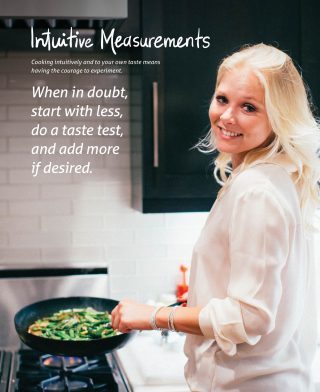 My favorite tip is Tip #1: Experiment. How do you know what you don’t like if you haven’t tried it? I’ve made some of my best dishes simply trying something out because that’s all that was left in the fridge. Experiment, break the rules, learn from your mistakes. Some of my favorite recipes in the book include a bunch of leftovers that I creatively repurposed.
My favorite tip is Tip #1: Experiment. How do you know what you don’t like if you haven’t tried it? I’ve made some of my best dishes simply trying something out because that’s all that was left in the fridge. Experiment, break the rules, learn from your mistakes. Some of my favorite recipes in the book include a bunch of leftovers that I creatively repurposed.
The waffles are probably my favorite recipe. Some might not call them Primal. I find it so easy for me to eat healthy/Primal all the time, but I feel like I don’t give myself a chance to indulge on things like decadent breakfast items, desserts, or heavy meals. The waffles give me a chance to feel like I can loosen up, join the crowd, and enjoy my food while eating something that is going to positively affect my body and spirit.
Do you have a couple favorite, go-to recipes that you knew had to make it into the book?
I knew I had to include some sort of eggy breakfast muffin. They’re so easy to make, so delicious, and can be made ahead to enjoy at any time of day. They can be fun to experiment with, they require no expertise, and I haven’t met someone who didn’t enjoy them. I also had to include some salads. I feel like salads have a bad reputation for being a “diet food,” but I LOVE a good salad. To me, a salad is just a bowl of goodness with a base of lettuce. You can put anything on lettuce, call it a salad, enjoy the heck out of it, all while getting some good quality nutrition.
How would you describe your personal approach to healthy eating, and what were the most important influences (Primal or non-Primal) in coming to that approach?
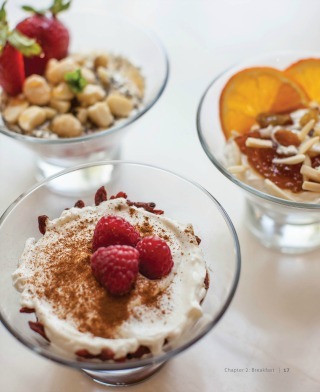 There are many things, people and experiences that have informed my eating and lifestyle choices. My personal approach to eating healthy is simple—if I can’t pronounce the ingredients, I usually won’t eat it. I eat as many things as I can that grow from the ground. Occasionally, I eat things that eat off the ground, and I rarely eat things from a package. Obviously, my dad informed my eating habits, but it was not until I studied with The Institute for Integrative Nutrition that I realized WHY I was eating the way I was. It no longer became “because dad does.” My decisions started to feel more like “I choose to.” When people ask if I’m paleo/Primal, I say “yes,” but only because all the things I eat tend to fall in that category of “crap-free.”
There are many things, people and experiences that have informed my eating and lifestyle choices. My personal approach to eating healthy is simple—if I can’t pronounce the ingredients, I usually won’t eat it. I eat as many things as I can that grow from the ground. Occasionally, I eat things that eat off the ground, and I rarely eat things from a package. Obviously, my dad informed my eating habits, but it was not until I studied with The Institute for Integrative Nutrition that I realized WHY I was eating the way I was. It no longer became “because dad does.” My decisions started to feel more like “I choose to.” When people ask if I’m paleo/Primal, I say “yes,” but only because all the things I eat tend to fall in that category of “crap-free.”
What has creating this book meant for your personal journey with eating and cooking?
This book has exposed me, my family, and my friends to the public. Writing and cooking my way through this book allowed me to take a look at my relationship to and with food. I put myself under a microscope for the last few years as I discovered, dissected, ignored, and studied different parts of myself. I fell in and out of love in the kitchen, celebrated, cried, danced, laughed, and learned. I wouldn’t trade it for the world.
What surprised you about the process of creating the book?
 How much of my social life is surrounded by food. I paid close attention to my relationships and food experiences as I was in the process of writing the book. I was amazed at how often I met up with someone for a smoothie and great conversation, went on a romantic date where we shared food, met my mother for lunch or cooked for tons of people during a celebration.
How much of my social life is surrounded by food. I paid close attention to my relationships and food experiences as I was in the process of writing the book. I was amazed at how often I met up with someone for a smoothie and great conversation, went on a romantic date where we shared food, met my mother for lunch or cooked for tons of people during a celebration.
Many of my interactions and development of new or old friendships revolved around food. The only time I spent with my whole family was for dinner. When I saw old friends, it was over lunch. When I met someone new, it was for coffee. I was amazed at how SOCIAL food is, and how each relationship changed the way the food felt in my body. The experience and conversation dictated how nourished I felt afterward—no matter what I ate.
What’s one of your favorite moments in writing and creating the photos for the book?
Seeing the first photo my photographer Austin and I took (I think it was a cauliflower dish). I have zero experience in food styling, and this was his first cookbook. The picture was nothing like I had imagined, but it looked amazing! I realized in that moment that I would do LIFE with my intuition, not just the cooking part.
What would you like readers to take away from the book for their journeys?
Be curious. Ask yourself questions. Get to know your body. What feels good? What tastes good? What looks good? Pay attention. Become more aware of your relationship to food (healthy or not, we all have one), and don’t be afraid to make mistakes. Let your intuition guide you in the kitchen. Before you know it, you’ll notice that intuitive approach start to spill over into other aspects of your life.

Today, per Mark’s Daily Apple tradition, I’ve never been more excited to put together a limited-time offer for Devyn’s book release.
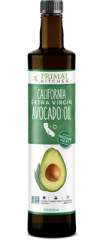 For the FIRST 200 ORDERS…purchase one or more copies of Kitchen Intuition from Primal Blueprint.com, and get a FREE bottle of PRIMAL KITCHEN® Extra Virgin Avocado Oil—the perfect complement to many of the Kitchen Intuition recipes. You’ll also receive a copy of the book personally signed by Devyn.
For the FIRST 200 ORDERS…purchase one or more copies of Kitchen Intuition from Primal Blueprint.com, and get a FREE bottle of PRIMAL KITCHEN® Extra Virgin Avocado Oil—the perfect complement to many of the Kitchen Intuition recipes. You’ll also receive a copy of the book personally signed by Devyn.
You won’t want to miss Devyn’s creative and inspiring message—and this book’s potential to expand or even redefine your Primal eating. You’ll find more than 75 recipes—from dips and bites to scrumptious sides, savory soups to zesty salads, and plenty of main dishes to fill your Primal appetite.
You’ll find Kitchen Intuition for sale on Amazon.com as well starting today. However, this deal only applies to PrimalBlueprint.com purchases and expires when supplies run out or on April 28th at midnight, PDT. One offer per customer. Both domestic (U.S.) and international orders are eligible.
Thanks for stopping by today, everyone, and for sharing the moment. This blog and all that’s grown out of it has certainly changed my life. It’s an amazing experience to see it play a part in my daughter’s life and vision.
The post Introducing Kitchen Intuition by Devyn Sisson! appeared first on Mark's Daily Apple.



April 17, 2017
Dear Mark: Alcohol and LDL, Liverwurst, Coffee and Milk, Kid Snacks, and High Carb Questions
 For today’s edition of Dear Mark, I’m answering 14 questions. The first concerns the effect of alcohol intake on LDL. Does it increase it or lower it (or both)? Next, what’s the best liverwurst to eat? After that, I discuss whether drinking coffee with milk makes the coffee antioxidants useless, followed by a quick list of good snacks for kids. The last ten questions concern cycling high-carb feeds on low-carb diets. They all come from one reader, and they’re very specific and well-constructed.
For today’s edition of Dear Mark, I’m answering 14 questions. The first concerns the effect of alcohol intake on LDL. Does it increase it or lower it (or both)? Next, what’s the best liverwurst to eat? After that, I discuss whether drinking coffee with milk makes the coffee antioxidants useless, followed by a quick list of good snacks for kids. The last ten questions concern cycling high-carb feeds on low-carb diets. They all come from one reader, and they’re very specific and well-constructed.
Let’s go:
Mark, I truly appreciate the blog. I’d like to know your thoughts on the correlation, if any, between alcohol consumption and high cholesterol (particularly LDL). I’ve been following an 80-20 Primal lifestyle for about 4 years, but have had stubbornly high cholesterol levels to the point where my PCP wants to put me on a statin. Thanks again for all you do!
Full-on alcoholics tend to have shockingly low LDL levels. This isn’t good; LDL particles, remember, serve important immune functions. But the relationship seems to hold at more moderate levels of intake, too. In middle-aged Japanese men, for example, alcohol intake predicted lower LDL levels.
Alcohol also increases HDL levels, even acutely—just a single dose of alcohol increases it.
This jibes with the usually protective association between alcohol intake and heart disease, whether it’s postmenopausal women, Spanish men, or German adults.
Of course, there’s evidence that your genetics determine the effect of alcohol on LDL. In folks with the ApoE2 gene, alcohol lowers LDL. In those with the ApoE4 gene, alcohol increases it.
Mark, I would like to know if liverwurst is an ok way to get some organ meat, is it primal? My wife and I can’t stand organs by themselves, so I thought this may be a way to get some and we like it. I would guess that there are varying qualities and types, so guidance on how to pick would be great. I also enjoy scrapple, same question, is it primal and how to choose the best.
Best liverwurst I’ve ever had comes from US Wellness. It’s 50% beef trim, 20% liver, 15% heart, 15% kidney. All grass-fed. They also have a braunschweiger that’s 60% trim and 40% liver.
Traditional scrapple was great: pig parts, buckwheat (not a grain, not wheat), and bone broth cooked down into sort of a pork polenta that’s chilled and pan-fried. These days, scrapple is more of a mixed bag, since you get it in restaurants and they’ve started using wheat flour and cornmeal instead of buckwheat. If you’re trying to avoid wheat flour—as you probably should—the trick is finding a place that makes scrapple with buckwheat and/or cornmeal.
Or just make your own.
Hi Mark, almost every month I hear new conflicting information about whether coffee is healthy or not. What are your current thoughts on coffee and is it true that the antioxidants in coffee lose their power when consumed with milk?
My stance on coffee is resolute: It is a public good. It’s fueled revolutions and scientific discoveries. Just imagine the wondrous developments that’d result if the ancient Greeks, Romans, and Egyptians had used coffee. Or what if the Mongols had adopted coffee drinking after sacking Baghdad—would we all be drinking fermented mare milk, eating saddle meat (or not), and getting around on horseback? Fun to think about.
As to milk binding the antioxidants and rendering them useless, I wouldn’t worry. A 2010 study found that only non-dairy creamer slowed the absorption of coffee polyphenols. Real milk added to coffee had no effect. Even then, the non-dairy creamer only delayed the appearance of the polyphenols in the blood. They still got there. It just took them awhile.
I would like to see more recipes for primal snacks for my kids…and me too!. It breaks my heart to see them devour a bag of Oreos and then deal with the resulting poor behaviour.
I can do a comprehensive post in the future, but for now, some easy grab-and-go options you might not have considered.
Jerky. A classic.
Epic Bars are pretty good. Great ingredients, almost exclusively grass-fed/pastured animals. They don’t shy away from fat. A mix of sweet-savory and savory flavors.
Aforementioned US Wellness liverwurst and braunschweiger. Get those kids to eat liver.
Hard boiled eggs.
Cheese. Hard, aged ones travel well.
Pork rinds. Make sure you get the ones cooked in their own fat. Beware vegetable oils in the ingredients list.
Apples.
Carrots.
Also, just trust your kids. They’re usually more adventurous than we assume. You’d be surprised what happens when you plop a cross section of a cow femur loaded with roasted marrow in front of a 5 year old.
Hey Mark, I would like to know know more about how to properly utilize carb-cycling (CC) while integrating intermittent fasting (IF).
1. With CC how do you determine which days to crank up carbs? Every day you lift? Only on Heavy lift days?
2. Do you lose the carb-feed benefits window if you lift in the morning, then fast until noon?
3. Carbs at night when training only in the mornings? Are they effective?
4. What about carb sources with high fat with carb cycling?
5. How many grams of fat allowed on a high carb day?
6. Are there better fat sources than other on high carb days?
7. Is there a specific time of day to eat the limited fat on high carb days?
8. How to determine which carbs are right for you? Sweet potatoes, white potatoes? Rice? Any experiments?
9. Should you have carbs on rest days while Carb Cycling? If so, how many grams?
10. Should fat ever be mixed with carbs? Why or Why not?
That was quite a series of questions. I’ll do a quick run through and maybe expand in the future.
Only on heavy/intense days. Long hike? Stay low-carb; you’re burning almost all fat (or that should be the goal). CrossFit WOD? Carb-up. Heavy squats? Carb-up. Short (5-10 second) sprints with plenty of rest in between, where you’re truly going all out and getting full recovery? Stay low-carb; you likely burned primarily ATP-PC, not glycogen. High-intensity intervals with shorter rest periods that leave you gasping? Carb-up.
You’ve got some time. Insulin-independent glucose uptake increases for around 2 hours after exercise. Insulin sensitivity increases for at least 16 hours after exercise.
Try “sleeping low.” This works best training in the afternoon or early evening. You go into the evening/early evening workout with carbs in your system. This should be a glycogen-depleting workout. You eat a low-carb or zero-carb (or fast) post-workout meal, then go to sleep. Wake up, and do some easy cardio without eating. A brisk hike, some easy cycling, maybe a short jog, always staying in your aerobic HR zone. You’ll get really good at burning fat this way. After the morning workout, eat some carbs.
Unless you’re just a workhorse, expending a ton of energy, training every day, veering close to burning out, you’ll have better luck with keeping your high-carb days relatively lower-fat.
Around 15-20% of total calories. Try for less. You may get better results that way.
PUFAs seem to have a more neutral effect on insulin resistance in the presence of carbs than other fats. Get a “balanced” intake, rather than leaning heavily toward one or the other. Butter, avocados (or avocado oil), almonds, and salmon is a better combo than butter, butter, butter, and butter.
No, it doesn’t matter if you keep it relatively low.
Robb Wolf has been pushing continuous glucose monitoring to track how different carb sources affect your blood glucose minute-to-minute. He’s getting great results. CGMs are prescription only, but I think that’s due to change in the near future. You could also do classic blood glucose prick tests at 1, 2, and 3 hours after your meals.
Keep carbs between 30-150 grams on rest days, depending on how low you enjoy going.
Fat and carbs are delicious together. That’s one reason to eat them—sheer pleasure. It’s also an argument against eating them: We’re liable to eat way too much. If you can keep from going crazy, you’re reasonably active, and you’re happy with your body composition (or its trajectory), fat and carbs are fine together. Fat and carbs become trouble when we eat too many of them at one time, like eating a half plate full of mashed potatoes loaded with butter and cream.
That’s it for this week, folks. Thanks for reading and be sure to help out with your own input down below.
The post Dear Mark: Alcohol and LDL, Liverwurst, Coffee and Milk, Kid Snacks, and High Carb Questions appeared first on Mark's Daily Apple.



April 16, 2017
Weekend Link Love – Edition 448
 RESEARCH OF THE WEEK
RESEARCH OF THE WEEKChronic sleep deprivation batters bone formation.
Drinking sugar-sweetened beverages as they grow makes mice more aggressive.
After telling no lies and being completely honest in every conversation for three days, people discovered that “being honest is far more pleasurable, leads to greater levels of social connection, and does less relational harm than” expected.
Food smells better when you’re sleep-deprived.
If you’ve got metabolic syndrome, better eat your avocados.
Cannibalism was more ritual than nutritional. We’re too hard to catch and too stringy.
How stevia controls blood sugar.
Paleolithic hunter-gatherers were amateur dentists.
Kids who spend time in places where people have smoked have nicotine on their hands and in their saliva.
Calorie reduction as you age has favorable epigenetic effects.
Central-Eastern Europe was full of giant hunters who specialized in killing mammoths and, eventually, dunking basketballs.
NEW PRIMAL BLUEPRINT PODCASTS
Episode 164: Devyn Sisson and Kyle Sisson: Host Elle Russ chats with my kids, Devyn and Kyle, about their new venture—opening the Culver City Primal Kitchen restaurant this summer—and what it was like growing up in the Sisson household.
Each week, select Mark’s Daily Apple blog posts are prepared as Primal Blueprint Podcasts. Need to catch up on reading, but don’t have the time? Prefer to listen to articles while on the go? Check out the new blog post podcasts below, and subscribe to the Primal Blueprint Podcast here so you never miss an episode.
INTERESTING BLOG POSTS
Fecal transplants (from young to old) may increase longevity.
Talk about a success story.
A shoe blogger discovers the advanced technology attached to his ankles.
Evolution is bigoted against the aged.
MEDIA, SCHMEDIA
Penzeys Spices scion dishes on the futility of salt grinders and other juicy spice trade gossip.
Could a virus trigger celiac disease?
Diabetes is even worse than we thought.
EVERYTHING ELSE
Apple’s working on a non-invasive way to track blood sugar levels.
Would you swim in this pool?
Researchers can now identify trace remnants of organic poisons from archaeological dig sites.
Dinosaur-faced chicken? Sure, let’s go with it.
Even meaningless rituals are probably good for us.
THINGS I’M UP TO AND INTERESTED IN
Excellent news from New Zealand: New Zealand just appointed Professor Grant Schofield, noted low-carb, high-fat proponent, to be its Ministry of Education’s first Chief Education Health and Nutrition Advisor.
Study that may explain why I’m still a fan of fruit: Eating fresh fruit is associated with a lower incidence of diabetes than not eating fresh fruit.
An excuse I’ve made a few times myself: Blame the dog.
Podcast I enjoyed: How Trauma Lodges in the Body (episode of On Being with Krista Tippett).
Miscellaneous news I enjoyed: Unilever is getting out of the margarine game.
RECIPE CORNER
Bet you can’t match these matcha coconut gummies.
Buffalo chicken bacon ranch casserole.
TIME CAPSULE
One year ago (Apr 16– Apr 22)
Do Foam Rollers Really Work? – Are we gaining from the pain?
8 Ayurvedic Herbs That Actually Work – It’s not all nonsense..
COMMENT OF THE WEEK
““Healthy white adults with borderline hepatitis…” hmmm, not exactly what I would label as healthy, but then again, I’m no scientist. Haha”
– I had the same reaction, Sara.

The post Weekend Link Love – Edition 448 appeared first on Mark's Daily Apple.



April 15, 2017
Almost Deviled Eggs
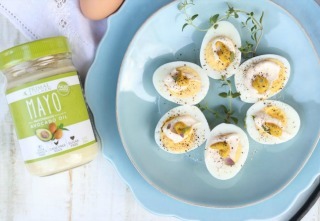 Today’s guest recipe is served up by a good friend to Mark’s Daily Apple—Maria Emmerich, well-known author and health blogger.
Today’s guest recipe is served up by a good friend to Mark’s Daily Apple—Maria Emmerich, well-known author and health blogger.
I grew up overweight and unhealthy. I love food and I will always love food. I have just decided to make keto my lifestyle, not only for me but my whole family.
Planning ahead has helped me stick to this lifestyle and keep the weight off for over a decade. One downfall I suffered from in the past was dinner parties and family gatherings where I had nothing healthy to eat so I would fall off the wagon, which often derailed me from my lifestyle for too long. Too many times I have gone to a family gathering or dinner party to be dissapointed at the keto options served at the table. To keep me prepared, I always love to bring an appetizer and a dessert to share. As a hostess, I am always grateful when a guest offers to bring a dish to pass, and I find that every time I offer to bring something the host is more than happy that I help out.
My go-to appetizer is a deviled egg; they are not only one of my favorites, my kids love them too. They are tasty, dairy free and always the first food to disappear—especially if my little boy Kai is anywhere near them. He often begs me to make him deviled eggs for breakfast, and many times the tedious part of making the filling then re-filling the eggs isn’t something I have time for since I am a busy working mom who also home-schools my boys.

My solution for deviled eggs on busy mornings is my “Almost Deviled Egg” recipe, and I am so grateful to PRIMAL KITCHEN® for developing a tasty and healthy mayo that I no longer have to make myself. These deviled eggs are so simple, lovely and tasty that they can be served at any gathering, and they are sure to be gobbled up! There are never any leftovers in the Emmerich household!
Almost Deviled Eggs
To make deviled eggs even easier, pick up already boiled eggs from your local grocery store. Even I get pressed for time, and peeling eggs can take forever. Getting cooked and peeled eggs makes recipes like this super easy!
Prep: 6 minutes
Yield: 12 servings (2 halves per serving)
*Dairy free
*Nut free
Ingredients
12 hard boiled eggs
¼ cup PRIMAL KITCHEN® Mayonnaise
2 teaspoons yellow mustard
½ teaspoon fine grain sea salt
Garnish with fresh thyme leaves
Instructions
Place eggs in a large saucepan and cover with cold water. Bring the water to a boil, then immediately cover the pan and remove it from the heat. Allow the eggs to cook in hot water for 11 minutes.
Rinse under cold water, then peel the shells from the eggs. Halve eggs lengthwise. Spread mayo onto each half. Top with a squirt of mustard. Sprinkle with salt and garnish with herbs. Store extras in an airtight container in the fridge for up to 3 days.

BIO: Maria Emmerich is a wellness expert in nutrition and exercise physiology. She is the author of several cookbooks and nutritional guidebooks, including the global bestsellers The 30 Day Ketogenic Cleanse as well as The Ketogenic Cookbook and Quick & Easy Ketogenic Cooking. Maria’s blog, mariamindbodyhealth.com, offers a unique combination of innovative recipes using alternative ingredients to less-healthy options and easy-to-understand explanations of why these options are better for our health.
After struggling with her weight throughout her childhood, she decided to study health and wellness so she could help others who are discouraged by their appearance and do not feel their best. The nutrient-rich approach that she developed for herself and the exotic, little-known replacements for high-glycemic starchy foods and sugar are what finally gave her total peace with food, something she never imagined possible. She also runs a support site for getting all your questions answered here:
keto-adapted.com


The post Almost Deviled Eggs appeared first on Mark's Daily Apple.



April 14, 2017
Amazing Effects on All Aspects of My Life!
It’s Friday, everyone! And that means another Primal Blueprint Real Life Story from a Mark’s Daily Apple reader. If you have your own success story and would like to share it with me and the Mark’s Daily Apple community please contact me here. In fact, I have a contest going right now. So if you have a story to share, no matter how big or how small, you’ll be in the running to win a big prize. Read more here.
 My name is Casie and I’m 26 years old.
My name is Casie and I’m 26 years old.
My story actually begins with my brother, best friend and my inspiration, Jesse. After brief experiments with vegetarianism and veganism, Jesse started on the primal path and never looked back. I, of course, thought he was insane, and didn’t see the point at all. As an animal lover, Jesse decided the best way to get my attention would be to lend me a book all about how animals are treated in factory farms. I read it and it definitely got my attention. I started thinking more about the food I ate.
This was around the time I was 21. I used to eat horribly. Fast food, pop, processed garbage galore! And candy. Don’t forget candy. Although I knew that pop, fast food and candy weren’t good for me, I genuinely thought the other food I ate was. A healthy meal to me then is something I would never eat now. And never want to eat.
I was one of those people that never really gained weight no matter what I ate, so I honestly thought I could eat whatever I wanted. I didn’t realize all of the other ways your food and lifestyle affects your every day life!
I was dealing with anxiety and depression at this time. I cried, a lot, and for no real reason. I had crazy mood swings and no self esteem. It was affecting my personal life and my work life. I had entered into an unhealthy relationship and I blamed the relationship for my anxiety and depression. Since I was so insecure, just ending the relationship wasn’t easy, even though I thought it was the root cause of my issues.
On the physical side of things, I suffered from the common “afternoon crash” daily, and felt bloated after pretty well every meal. I didn’t have a lot of energy, and this mixed with my anxiety meant I rarely felt like doing anything. I was most definitely not a very happy person. But to be honest, I still didn’t really think there was anything wrong with me. I didn’t think anything about me needed changing.
After reading the first book Jesse lent me, he lent me The Primal Blueprint. I read it very quickly, with interest, and the lightbulb went off. It all made SO MUCH sense. And it inspired me. By this point I had to admit that Jesse had become a very positive person, and a passionate advocate for eating well. This, too, was inspiring.
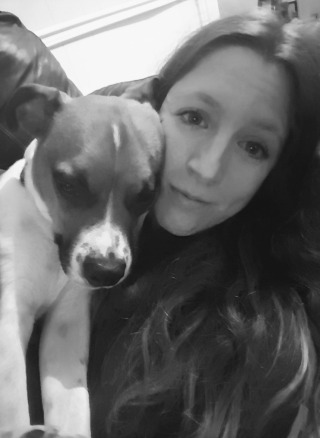 I started making changes, but it was definitely gradual for me. I cut out pop, candy and fast food, and started trying to eat more meat and fish (I ate a lot of cheap pasta at this point). Then I cut out the grains and started buying organic and ethically raised foods. It probably took me almost a year to fully transition, with lots of slips along the way. During all of this I (like most of us!) became obsessed with learning about all aspects of health and lifestyle.
I started making changes, but it was definitely gradual for me. I cut out pop, candy and fast food, and started trying to eat more meat and fish (I ate a lot of cheap pasta at this point). Then I cut out the grains and started buying organic and ethically raised foods. It probably took me almost a year to fully transition, with lots of slips along the way. During all of this I (like most of us!) became obsessed with learning about all aspects of health and lifestyle.
It’s been over three years now that I’ve been eating primal-aligned, and I am a completely different person. The first change I noticed was that my energy levels soared. And I never get that afternoon crash anymore. I never feel bloated. Then, and most importantly for me, my anxiety practically vanished along with my depression. I became an extremely happy, positive, outgoing, confident, independent, Vibram-wearing, Kombucha-loving person, which had amazing effects on all aspects of my life. I ended the toxic relationship years ago, realizing it was just another symptom of my former poor health. I started surrounding myself with only positive influences.
I had so much energy that I needed an outlet, and started (and fell in love with) Crossfit. I was never an athlete or particularly fit person, and Crossfit helped me to become even more confident in myself. This past summer I went on a three week solo road trip to Vancouver Island, B.C., even stopping at a couple of Crossfit boxes along the way. It was an absolutely incredible experience, but I would have never had the nerve or confidence to do it before.
 Eating well is second nature now. I don’t desire foods that don’t make me feel well. When I do indulge in something that isn’t very primal-aligned (usually Sushi!), I enjoy it and never feel guilty about it. This guilt pattern was something I used to deal with a lot when I started, but it really doesn’t help anything.
Eating well is second nature now. I don’t desire foods that don’t make me feel well. When I do indulge in something that isn’t very primal-aligned (usually Sushi!), I enjoy it and never feel guilty about it. This guilt pattern was something I used to deal with a lot when I started, but it really doesn’t help anything.
When the Primal Health Coach course was launched, I wanted to take it right away. It took me a while to get through it, but I have now and have launched my Health Coaching business. I am beyond excited to be able to help others improve their lives. The best advice I can give those struggling with the journey is to stay positive and ignore negative influences! I’ve dealt with my fair share and I know there are tons out there…surrounding yourself with a positive support system helps tremendously- like a Primal Health Coach! 
Mark Sisson's Blog
- Mark Sisson's profile
- 199 followers







